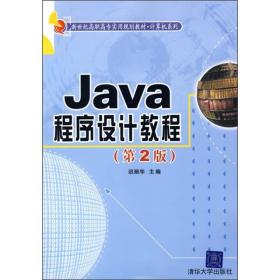
CISCO路由器配置导论(影印本):英文版
¥ 17.8 3.4折 ¥ 53 全新
仅1件
河北保定
认证卖家担保交易快速发货售后保障
作者Chappell,L.
出版社清华大学出版社
出版时间1999-04
版次1
装帧平装
货号9787302034629
上书时间2024-12-15
- 在售商品 暂无
- 平均发货时间 27小时
- 好评率 暂无
- 最新上架
商品详情
- 品相描述:全新
图书标准信息
- 作者 Chappell,L.
- 出版社 清华大学出版社
- 出版时间 1999-04
- 版次 1
- ISBN 9787302034629
- 定价 53.00元
- 装帧 平装
- 开本 其他
- 纸张 其他
- 页数 534页
- 【内容简介】
- 本书包含有关路由模型,进程和设计的翔实技术细节,可以作为设计,实现或支持基于TCP、IP、IPX、SPX,APPLETALK,SNA,DECNET和BANYAN VINES协议的网络互连的参考手册。本收主要包括三部分;I.网络互连的相关概念和理论,主要介绍物理层,数据链路层,网络层的协议以及基本路由器的配置;II.详细介绍TCP、IP协议,也包括NOVEL IPX,APPLETALK协议的配置方法等;III.介绍WAN的通信,包括WAN的连接,X25和帧中继的配置等。本书特别适合于参加CCNA考试的读者。Cisco公司把本书作为CCNA的正式课本。对于其他读者,本书可以使他们增加对影响网络安全的基础理论的理解。
- 【目录】
-
PART 1 INTRODUCTION TO INTERNETWORKING
Chapter 1 The Internetworking Model
The Evolution of Networks
1960s and 1970s:Centralized Processing
1970s and 1980s:NetWorks
1980s and 1990s:Internetworks
1990s:global Internetworking
Network Types and Devices
Local-Area Networks
Wide-Area Networks
Enterprise Networks
Network Design Goals
The Layered Model
Why Use a Layered Model
Application Layer
Presentation Layer
Session Layer
Transport Layer
Network Layer
Data Link Layer
Physical Layer
Peer-to-Peer Communications
Data Encapsulation and Headers
Step 1:Build the Data
Step 2:Package Data for End-to-End Transport
Step 3:Append Network Address in Header
Step 4:Append Local Address
in Data-Link Header
Step 5:Convert to Bits for Transmission
Summary
Chapter One Test :The Internetworking Model
Chapter 2 Applications and Upper Layers
Application Layer
Presentation Layer
Text and Data Formatting and Conversion
Graphics Formatting and Conversion
Audio and Video Formatting and Conversion
Session Layer
Transport Layer
Multiplexing
Connection-Oriented Sessions
Flow Control and congestion Avoidance
Flow Control with Windowing
Positive Acknowledgment
Summary
Chapter Two Test:Application and Upper Layers
Chapter 3 Physical and Data Link Layers
Basic Data-Link and Physical Layer Functions
LAN Standards and Standards Organizations
LAN Data Link Sublayers
LLC Sublayer Functions
MAC Sublayer Functions
Physical and Logical Addressing
MAC Addresses
Finding the MAC Address
Common LAN Technologies
Ethernet and IEEE 802.3
The Ethernet/802.3
The Ethernet/802.3 Physical Layer
Ethernet/802.3 Operation
Ethernet/802.3 broadcasts and Multicasts
Ethernet/802.3 Types
Ethernet/802.3 Reliability
High-Speed Ethernet Options
Token Ring and IEEE 802.5
Physical Layer:Token Ring/802.5
The Token Ring/802.5 Interface
Toke Ring/802.5 Operation
Token Ring/802.5 Media Control
Token Ring/802.5 Active Monitor
Token Ring/802.5 Reliability
FDDI
Physical Layer:FDDI
The FDDI Interface
FDDI Dual-Ring Reliability
Common WAN Technologies
Physical Layer:WAN
Data Link Layer:WAN Protocols
Synchronous Data Link Control
High-Level Data Link Control
Link Access Procedure,Balanced
Frame Relay
Point-to-Point Protocol
Integrated Services Digital Network
Summary
Chapter Three Test:Physical and Data Link Layers
Chapter 4 Network Layer and Path Determination
Network Layer Basics
Path Determination
Communicating Path Information
Addressing:Network and Host
Protocol Addressing Variations
TCP/IP Network Addressing
Other Protocol Addressing
Routing Uses Network Addresses
Routed Versus Routing Protocol
Routed Protocol
Routing Protocol
Network-Layer Protocol Operations
Multiprotocol Routing
Static Versus Dynamic Routes
Static Route Example
Default Route
Adapting to Topology Change
Dynamic routing Operations
Representing Distance With Metrics
Routing Protocols
Distance Vector Routing
Distance Vector Network Discovery
Distance Vector Topology Changes
Problem:Routing Loops
Symptom:Counting to Infinity
Solution:Defining a Maximum
Solution:Split Horizon
Solution:Poison Reverse
Solution:Hold-Down Timers
Solution:Triggered Updates
Implementing Solutions in Multiple Routes
Link-State Routing
Link-State Network Discovery
Link-State Topology changes
Link-State Concerns
Problem:Link-State Updates
Solution:Link-State Mechanisms
Comparing Distance Vector Routing to Link-State Routing
Hybrid Routing
Basic Routing Processes
LAN-to-LAN Routing
LAN-to WAN Routing
Summary
Chapter Four Test:Network Layer and Path Determination
Chapter 5 Basic Router Operations
Starting Up a Router
External Configuration Sources
Internal configuration Components
RAM/DRAM
NVRAM
Flash Memory
ROM
Interfaces
Auxiliary Ports
System Startup Overview
Accessing the User Interface
Router Modes
User EXEC Mode
ROM Monitor Mode
Setup Mode
RXBoot Mode
Global Configuration Mode
Other Configuration Modes
Logging In to the Router
Using Passwords
Individual Line Passwords
Privileged EXEC Mode Password
Encrypted Passwords
Using Password
User Mode Command List
Privileged Mode Command List
context-Sensitive Help
Using Enhanced Editing Commands
Reviewing command History
Examining Router Status
show Version Command
Show startup-config Command
and show running-config Command
show interfaces Command
show protocols Command
Summary
Chapter Five Test:Basic Router Operations
Chapter 6 Configuring a Router
Loading configuration Files
Loading configuration Files-Releases Before 10.3
Loading Configuration Files from a TFTP Server
Fundamental Configuration Files from a TFTP Server
Fundamental Configuration Tasks
Overview of Router Modes
Configuring Router Identification
Password configuration
Console Password
Virtual Terminal Password
Privileged EXEC Mode Password
Password Encryption
Configuring and Managing an Interface
The show interfaces Command
Interpreting Interface Status
Configuring a Serial Line
Determining DCE/DTE Status
Verifying Your changes
Shutting Down an Interface
Verifying Configuration Changes-Release 10.3 and Later
Verifying Configuration Changes-Releases Before 10.3
Saving configuration Changes-Release 10.3+
Saving Configuration changes-Releases Before
Managing the configuration Environment
Locating the Cisco IOS Software
Determining the Current
Configuration Register Value
Boot System Options in Software
Preparing for a Network Backup Image
Viewing Available Memory
and the Image Filename
Creating Software Image Backup
Upgrading the Image from the Network
Overwriting an Existing Image
Creating or Changing a Configuration Using Setup Mode
Setup Mode Global Parameters
Setup Mode Interface Parameters
Setup Mode Script Review
Summary
Chapter Six Test:Configuring a Router
Chapter 7 Discovering and Accessing Other Cisco Routers
Cisco Discovery Protocol Overview
Using CDP on a Local Router
Altering CDP Parameters
Showing CDP Neighbors
Showing CDP Entries for a Neighboring Devices
Summary
Chapter Seven Test :Discovering and Accessing Other Cisco Routers
PART 2 NETWORKING PROTOCOL SUITES
Chapter 8 TCP/IP Overview
TCP/IP Protocol Stack
Application Layer Overview
Transport Layer Overview
TCP Segment Format
Port Numbers
TCP Port Numbers
TCP Handshake/Open Connection
TCP Simple Acknowledgment and Windowing
TCP Sequence and Acknowledgment Numbers
UDP Segment Format
Internet Layer Overview
IP Datagram
Internet Control Message Protocol
ICMP Testing
Address Resolution Protocol
Reverse
Summary
Chapter Eight Test:TCP/IP Overview
Chapter 9 IP Addressing
TCP/IP Address Overview
IP Addressing Overview
IP Address Classes
IP Address Bit Patterns
The First Octet Rule
Concepts of IP Address Configuration
Host Addresses
Addressing Without Subnets
Addressing with Subnets
Subnetting Addressing
Subnet Mask
Decimal Equivalents of Bit Patterns
Subnet Mask Without Subnets
Subnet Mask with Subnets
Subnet Planning
Class B Subnet Planning Example
Class C Subnet Planning Example
Broadcast Addresses
Configuration Commands
Configuring IP Addresses
IP Host Names
Name Server Configuration
Name-to-Address Schemes
Display Host Names
Verifying Address Configuration
Telnet Command
Simple Ping command
Extended Ping command
Trace Command
Summary
Chapter Nine Test:IP Address Configuration
Chapter 10 IP Routing configuration
Basic Mechanisms and Commands of IP Routing
Setting Up the Initial IP Routing Table
Understanding How IP Routing
Learns Destinations
Specifying Administrative Distance Values
Configuring Static Routes
Configuring Default Routers
Grouping into Autonomous Systems
Using Interior or Exterior Routing Protocols
Routing Protocol Problems
Interior IP Routing Protocols
Completing the IP Routing Configuration Tasks
Configuring RIP
Configuring RIP Router Commands
Viewing IP RIP Information
Configuring RIP Router Commands
Viewing IP RIP Information
Configuring IGRP
Understanding IGRP Operation
Flash Updates
Poison Reverse
Holddowns
Split Horizon
Using the IGRP Composite Metric
Unequal-Cost Load Balancing Feature
Creating an IGRP Routing Process
Displaying IGRP Routing Information
Summary
Chapter Ten Test:IP Routing Configuration
Chapter 11 Configuring Novell IPX
IPX routing Overview
Cisco Routers in NetWare Networks
Novell NetWare Protocol Suite
Key Novell NetWare Features
Novell IPX Addressing
How to Determine the IPX Address
Multiple Novell Encapsulation
Novell and Cisco Encapsulation Names
Novell Uses RIP for Routing
SAP:Supporting Service Advertisements
GNS:The Get Nearest Server Process
Configuring IPX Routing
Novell IPX Global Configuration Commands
ipx routing command
ipx maximum-paths Command
ipx route destination-net next-hop Command
Novell IPX Interface Configuration Commands
interface Command
ipx network Command
Novell IPX Configuration Example
Verifying and Monitoring IPX Routing
Monitoring the Status of an IPX Interface
Monitoring IPX Routing Tables
Monitoring the Novell IPX Servers
Monitoring IPX Traffic
Troubleshooting IPX Routing
Troubleshooting IPX SAP
Summary
Chapter Eleven Test:configuring Novell IPX
Chapter 12 Configuring Apple Talk
Apple Talk Overview
Apple Talk Protocol Stack
Apple Talk Features
Nonextended or Extended Networks
Apple Talk Addressing
Extended Addressing
Apple Talk Address Acquisition
Limiting Requests for Services
Apple Talk Services
Locating Apple Talk Services
Configuring Apple Talk
Apple Talk Configuration Tasks
Apple Talk Configuration Commands
AppleTalk routing Command
APPLETALK protocol Command
appletalk cable-range Command
appletalk zone Command
Apple Talk configuration Example
Discovery Mode
Discovery Mode Example
Verifying Your AppleTalk configuration
Summary
Chapter Twelve Test:Configuring Apple Talk
Chapter 13 Basic Traffic Management with Access Lists
Access Lists Overview
Why Use Access Lists?
Standard Access Lists
Extended Access Lists
How Access Lists Work
A List of Tests:Deny or Permit
Access List Command Overview
How to Identify Access Lists
TCP/IP Access Lists
Testing Packets with IP Access Lists
Key Concepts for IP Access Lists
How to Use Wildcard Mask Bits
Matching Any IP Address
Matching a Specific IP Host Address
IP Standard Access Configuration
Example 1:Permit My Network Only
Example 2:Deny a Specific Host
Example 3:Deny a Specific Subnet
Extended IP access Lists
Extended Access List Configuration
Example 1:Deny FTP for E0
Example 2:Deny Only Telnet out of E0
Permit All Other Traffic
Named Access Lists
Where to Place IP Access Lists
Verifying Access Lists
Monitoring Access List Statements
Novell IPX Access Lists
Testing Packets Using Novell Access Lists
Key Concepts for IPX Access Lists
Controlling IPX Overhead
IPX Standard Access List Configuration
Standard IPX Access List Example
IPX Extended Access List Configuration
Normal IPX SAP Operation
How to Use SAP Filters
SAO Filter Configuration Commands
Verifying IPX Access Lists
Apple Talk Access Lists
Testing Packets Using AppleTalk Access Lists
AppleTalk Network Structures
Key Concepts for Apple Talk Access Lists
Apple Talk Access List Procedures
Apple Talk Access List Commands
ZIP Reply Filter Configuration
Verifying Apple Talk Access Lists
Summary
Chapter Thirteen Test:Basic Traffic Management with Access Lists
PART 3 WIDE-AREA NETWORKING
Chapter 14 Introduction to WAN Compactions
WAN Services
Interfacing WAN Service Providers
Customer Premises Equipment
Demarcation
Local Loop
Central Office Switch
Tool Network
Subscriber to Provider Interface
Using WAN Services with Routers
WAN Frame Format Summary
An Overview of PPP
Layering PPP Elements
PPP LCP Configuration Options
PPP Session Establishment
Phase 1:Link Establishment
Phase 2:Authentication
Phase 3:Network-Layer Protocol
Selecting a PPP Authentication Protocol
PAP
CHAP
Configuring PPP Authentication
Verifying
Summary
Chapter Fourteen Test:
Introduction to Serial Connections
Chapter 15 Configuring X.25
X.25 Overview
X.25 Protocol Stack
X.25 DTE and DCE
X.25 Addressing Format
X.25 Encapsulation
X.25 Virtual Circuits
SVC Usage
Single Protocol Virtual Circuits
Multiprotocol Virtual Circuits
Configuring X.25
encapsulation X25 Command
X.25 address Command
X.25 map Command
X.25 Configuration Example
Additional Configuration Tasks
Configuring X.25 VC Ranges
Configuring X.25 Packet Sizes
Configuring X.25 Window Parameters
X.25 Additional Configuration Example
Setting Up the Router as a Witch
X.25 Local and XOT Switching
Monitoring
Summary
Chapter Fifteen Test:Configuring X.25
Chapter 16 Configuring Frame Relay
Frame Relay Overview
Frame Relay Terminology
Local Access
Data-Link Connection Identifier
Local Management Interface
Committed Information Rate
OversubscriptionOversubscription
Committed Burst
Excess Burst
Forward Explicit Congestion Notification
Backward Explicit Congestion Notification
Discard Eligibility Indicator
Frame Relay Operation
Configuring Frame Relay
Configuring Optional Commands
Verifying Frame Relay Operation
Selecting a Frame Relay Topology
Star Topology
Full-Mesh Topology
Partial-Mesh Topology
Partial-Mesh Topology
Ratability and Resource Issues for Frame Relay
Resolving Ratability and Resource Issuers:Subinterfaces
Configuring Subinterfaces
Multiunit Subinterfaces Configuration Example
Point-to-Point Subinterfaces
Configuration Example
Summary
Chapter Sixteen Test:Configuring Frame Relay
APPENDIXES
Appendix A Chapter Test Answer Key
Appendix B Configuring DECnet
Overview of DECnet
Node Assignments
Routers Pass Information
Designated Routers
Level 1and Level 2Routing
DECnet Configuration Commands
DECnet Configuration Tasks
DECnet Configuration Commands
DECnet Configuration Example
Configuring DECnet Access Lists
DECnet Access List Commands
Controlling DECnet Example
Monitoring DECnet
Appendix C Configuring Banyan VINES
VINES Overview
Network Number
Subnet Number
Cisco VINES Network Number
Host Address Assignment
Hello Messages
Configuring VINES
VINES Configuration Commands
VINES Access Lists
Monitoring VINES Operation
Appendix D Autoinstalling Configuration Data
Appendix E Decimal to Hexadecimal and Binary conversion Table
Appendix F Password Recovery
Technique #1
Technique #2
Appendix G Frame Relay Examples and Configurations
Apple Talk over Frame Relay Example
Configuring IPX over Frame Relay Example
Frame Relay switching Example
Appendix H Glossary
Index
点击展开
点击收起
— 没有更多了 —












以下为对购买帮助不大的评价